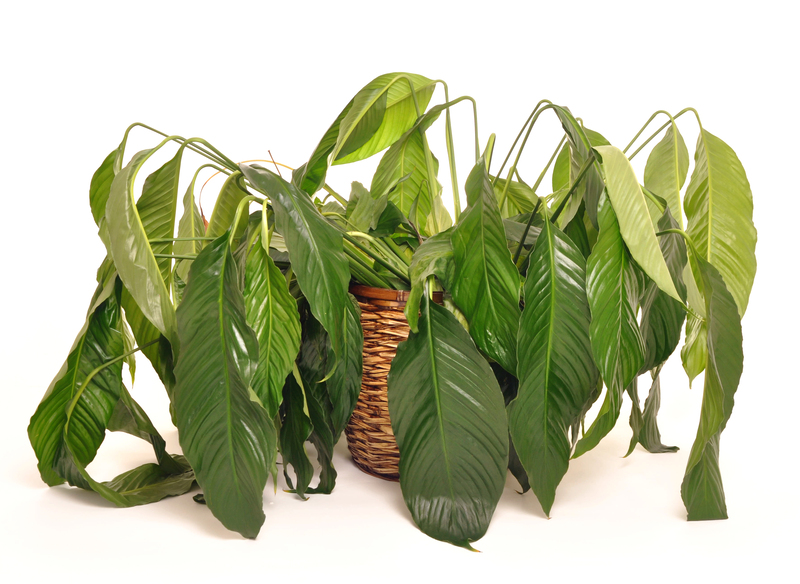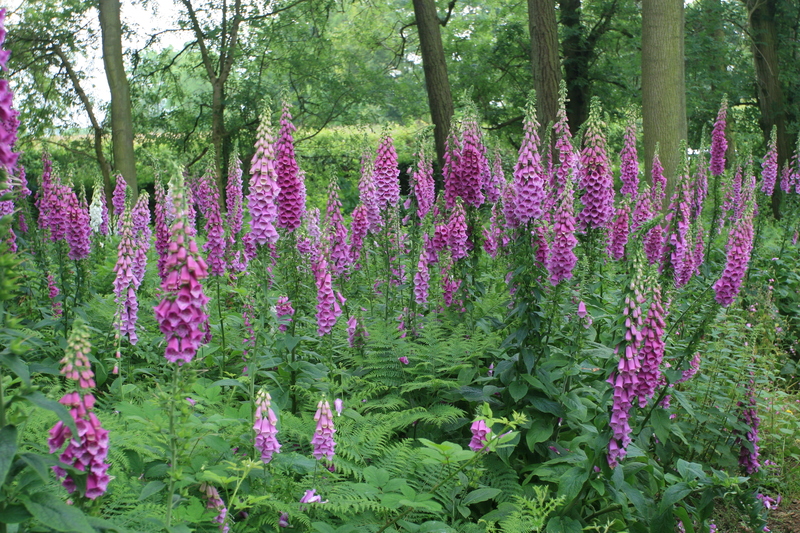Shield Your Greenery: Expert Winter Plant Care Strategies
Posted on 25/09/2025
Shield Your Greenery: Expert Winter Plant Care Strategies
As the days grow cooler and the nights become longer, it's time for every gardening enthusiast to shift their attention from growth to winter plant care. The changing season brings new challenges for your cherished greenery, but with expert strategies, you can protect, preserve, and even help your plants thrive through the cold months. In this comprehensive guide, we unveil the best strategies to shield your greenery, ensuring it emerges from winter healthy and strong.
Why Winter Plant Care Is Crucial
Many gardeners make the mistake of thinking plants are dormant or even "dead" during winter. In reality, even your hardiest outdoor specimens and your sheltered indoor houseplants require attention. Cold temperatures, fluctuating humidity, and reduced sunlight can all take a toll. Implementing expert cold weather plant care strategies helps to:
- Prevent frost damage to delicate and hardy plants alike.
- Maintain soil and root health through moisture management.
- Ward off pests and diseases that thrive in cooler, damp conditions.
- Provide structural support for trees and shrubs facing snow and wind.
Shielding your plants during winter isn't just about survival--it's about setting the scene for vigorous regrowth in spring.

Understanding Your Plant's Winter Needs
Know Your Plant Hardiness Zone
The USDA Hardiness Zone Map is an invaluable tool for every gardener. Knowing your region's zone helps you assess:
- Which plants need protection outdoors
- Which should be brought inside
- When to start your winter preparations
Assess Plant Vulnerability
Not all greenery requires the same level of attention:
- Evergreens, while sturdy, may still lose moisture and suffer from winter burn
- Tender perennials and container plants are often at high risk
- Established trees and shrubs usually fare well but still benefit from preventive care
Essential Strategies for Winter Plant Protection
1. Mulching for Insulation
Mulch acts as a natural blanket for roots and the soil, helping to regulate temperature fluctuations and maintain soil moisture. Here's how to mulch effectively:
- Apply a 2-4 inch layer of organic mulch, such as shredded leaves, bark, or straw, around trees, shrubs, and perennials.
- Keep mulch 2-3 inches away from stems to prevent rot.
- Consider replenishing mulch mid-winter if it has compacted or blown away.
Remember: Mulching not only insulates but also improves soil by breaking down into vital nutrients.
2. Protecting Root Systems
Roots are often the most vulnerable part of your greenery. Cold soil can damage roots, especially in containers or new plantings:
- Group potted plants together against a sheltered wall to share warmth.
- Wrap pots in burlap or horticultural fleece for extra insulation.
- Move containers indoors or to garages if temperatures drop below the plant's hardiness level.
3. Watering Wisely
Even in the cold, plants require water--especially before freezes:
- Water deeply before the first hard frost to hydrate roots.
- Avoid watering just before a freeze to prevent ice from damaging roots.
- Monitor moisture levels--don't allow soil to dry out completely.
For evergreens, adequate hydration is essential to prevent winter burn.
4. Use of Protective Covers
Covering plants shields them from frost, wind, and snow. Try these covers:
- Burlap or frost cloth for shrubs and young trees
- Cardboard "collars" or cones for smaller tender plants
- Polytunnels and cold frames for low-growing beds or vegetable gardens
Remove covers during the day if temperatures rise above freezing to prevent overheating and encourage airflow.
5. Pruning for Health and Safety
Prune damaged or diseased branches in late fall before severe cold settles in. Benefits of smart winter pruning include:
- Reducing risk of breakage under snow and ice
- Encouraging vigorous regrowth in spring
- Preventing pests and disease from overwintering in wounds
Do not prune spring-flowering species in late fall; wait until after bloom.
Shielding Different Types of Greenery
Winter Care for Outdoor Plants
Outdoor plants face the full force of winter. For cold climate plant care:
- Mulch and cover as described above
- Windbreaks or snow fencing help protect against wind desiccation
- Stakes and ties can support tall, slender trees and shrubs weighed down by snow
Snow can insulate--brush heavy snow off branches but avoid removing light snow cover from the ground.
Winter Plant Care for Indoor Greenery
Houseplants are not out of danger during winter! Adjust your plant care for winter by:
- Reducing watering--most indoor plants need less moisture during colder, darker months
- Maintaining stable temperatures--avoid drafts and direct contact with radiators
- Increasing humidity using trays of water or room humidifiers
- Providing as much natural light as possible, or supplement with grow lights
Rotate your houseplants regularly to ensure even light exposure and prevent legginess.
Special Considerations for Evergreens
Evergreens need water, wind protection, and occasional fertilization. Brown or scorched needles ("winter burn") is a common issue:
- Mulch deeply around the base to retain soil moisture and warmth
- Spray anti-desiccant products if wind is extreme
- Water when soil is dry on warmer days
Evergreens adapt to cold by slowing growth but still must manage moisture loss through leaves or needles.
Bonus Tips: Advanced Winter Plant Shielding Techniques
DIY Cold Frames and Cloches
Cold frames, mini-greenhouses, and cloches can extend the growing season and safeguard delicate plants. For a cost-effective solution, try:
- Recycling old windows or clear plastic to build a low-rigidity frame
- Inverting clear plastic bins or large jars over tender seedlings
Ventilate on sunny days to prevent overheating and condensation.
Soil Health and Preventing Compaction
Healthy, aerated soil supports resilient roots. Prevent winter compaction by:
- Reducing foot traffic over beds in wet or frozen conditions
- Adding mulch or straw to buffer impact and ice formation
- Top-dress with compost before the ground freezes to enrich soil over winter
Pest and Disease Management in Winter
Cool, damp conditions can be ideal for overwintering pests and fungi. Reduce risks by:
- Removing dead leaves and debris from around plants
- Disinfecting tools and pots before storage or reuse
- Checking stored bulbs and tubers regularly for signs of rot or disease
Prevention is always better than cure: Shielding your plants through sound hygiene will minimize spring outbreaks.
Common Winter Plant Care Mistakes to Avoid
- Overwatering or underwatering--both can be lethal during winter when plants use less water
- Fertilizing at the wrong time--avoid feeding until spring, unless directed for specific species
- Neglecting to remove dead plant material, which invites pests and disease
- Leaving tropical plants or tender annuals outdoors to freeze
- Using plastic sheeting directly on plants, which can trap moisture and freeze foliage
Preparing for Spring: Setting the Stage for New Growth
Expert winter plant protection doesn't end when the snow melts. As temperatures rise:
- Gradually remove mulch and covers to prevent shock
- Check plants for winter damage and prune as needed
- Resume fertilizing and regular watering
- Transplant anything overwintered indoors back to the garden when frost risk passes
A thoughtful winter plant care routine not only safeguards your greenery--it sets your garden up for a spectacular spring.

Frequently Asked Questions About Winter Plant Care
What is the most important aspect of winter plant protection?
Consistent moisture and root insulation are the most vital. Roots are often more vulnerable than leaves or stems.
Can I use household items to protect plants from frost?
Absolutely: Old bed sheets, towels, cardboard boxes, and even laundry baskets can temporarily shield your plants during cold snaps. Ensure material allows some airflow.
How do I care for my houseplants during winter?
Reduce watering, increase humidity, ensure enough light, and keep away from heat sources. Monitor for pests, which can sometimes increase indoors as outdoor conditions worsen.
Conclusion: Take Action to Shield Your Greenery This Winter
The journey of shielding your greenery through winter is one of preparation, vigilance, and care. By embracing these expert winter plant care strategies--tailored to your region, garden, and plant variety--you'll give your cherished plants the best chance not just to survive, but to thrive into the next season.
Don't wait for the first frost--start planning your plant winterization today! Your thriving, resilient garden will thank you come springtime.
```


